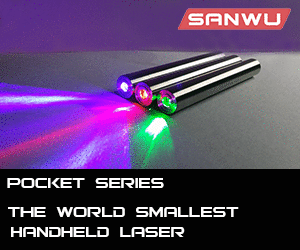- Joined
- Dec 9, 2009
- Messages
- 234
- Points
- 18
Hi All,
I have a question about the voltage supplied to the cathode of an argon laser tube. Say I have a tube and measure the voltage supplied to the cathode by the PSU as being 2.55vDC. Would the cathode blow if it was connected to a different PSU supplying 3.5v? How sensitive are the cathodes to voltage variations? Is there a reason why some PSUs might supply DC and others AC?
Thanks in advance!
I have a question about the voltage supplied to the cathode of an argon laser tube. Say I have a tube and measure the voltage supplied to the cathode by the PSU as being 2.55vDC. Would the cathode blow if it was connected to a different PSU supplying 3.5v? How sensitive are the cathodes to voltage variations? Is there a reason why some PSUs might supply DC and others AC?
Thanks in advance!



